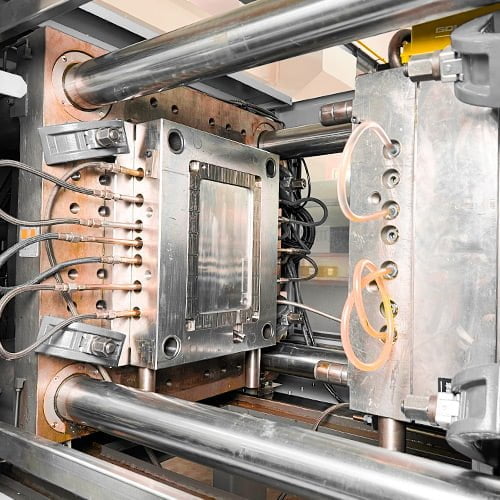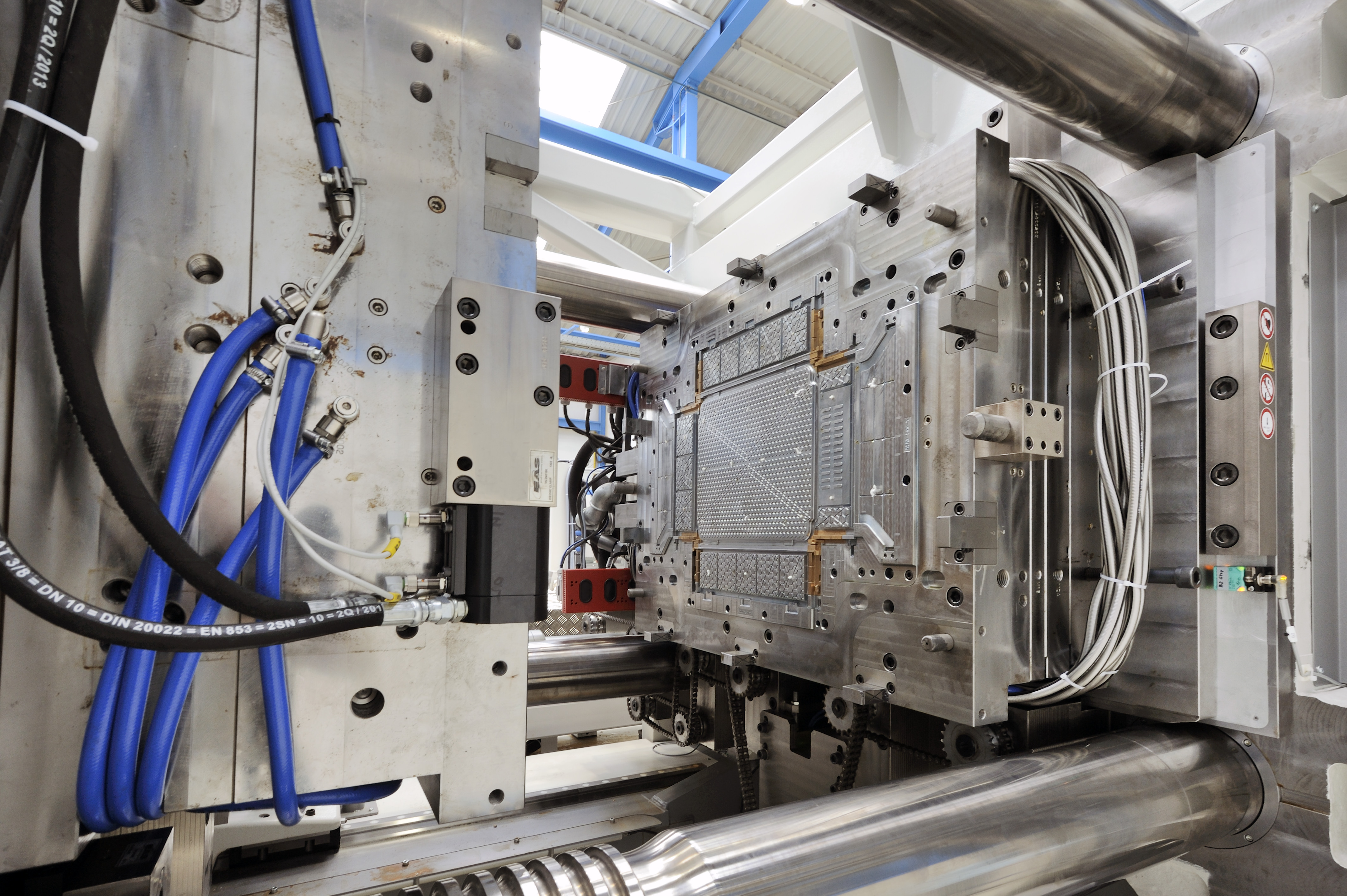The Future of Plastic Injection Molding: Innovations and patterns to Enjoy
As the plastic shot molding sector progresses, a number of key fads are arising that guarantee to improve its landscape. Automation and clever manufacturing techniques are established to improve productivity, while the change towards lasting materials reflects an expanding environmental awareness.
Automation and Smart Manufacturing
As the plastic injection molding sector progresses, automation and smart production are taking spotlight, revolutionizing manufacturing processes - Plastic Injection Molding. The assimilation of sophisticated technologies such as robotics, IoT (Web of Things), and expert system is making it possible for producers to boost effectiveness, reduce operational prices, and boost product top quality. Automated systems improve operations, reducing hand-operated intervention and boosting throughput, which is vital in satisfying the climbing demand for fast manufacturing cycles
Smart producing modern technologies help with real-time tracking and information analysis, enabling firms to optimize maker efficiency and predict maintenance requirements. This aggressive method not just decreases downtime but likewise prolongs the life-span of equipment. Additionally, using collaborative robots, or cobots, improves the versatility of manufacturing lines, enabling makers and employees to run side by side safely and efficiently.
The adoption of automation in plastic injection molding is not simply a pattern however a calculated essential for companies aiming to remain competitive in a global market. By utilizing these technologies, producers can achieve higher precision, reduce waste, and adjust promptly to transforming client demands, positioning themselves for sustainable development in a significantly computerized future.
Lasting Products and Practices
The push towards automation and smart production has actually led the way for a greater focus on lasting materials and practices within the plastic injection molding sector. Business are progressively seeking eco-friendly options to standard petroleum-based plastics, bring about the fostering of bio-based and recycled products. These sustainable materials not just minimize ecological impact but also align with customer need for greener products.

Moreover, cooperation in between suppliers, product distributors, and ecological companies is cultivating technology in the growth of lasting materials that satisfy performance standards without compromising quality. As regulations around plastic use come to be more stringent, the market is poised to adapt by embracing these lasting strategies, making certain long-lasting feasibility and decreasing reliance on non-renewable sources. The assimilation of sustainability right into plastic injection molding is not merely a fad; it is ending up being a necessary element of corporate duty and functional excellence.
Advances in 3D Printing
Current improvements in 3D printing technology are significantly changing the landscape of plastic injection molding. Impossible or as soon as difficult to achieve with traditional approaches, the integration of additive production processes enables for the rapid prototyping of complicated geometries that were. This capability not just accelerates product growth cycles but additionally decreases product waste, aligning with the growing need for sustainable production techniques
Additionally, the appearance of hybrid production techniques, which integrate 3D printing and shot molding, offers producers the capacity to create complex layouts while maintaining the effectiveness of mass manufacturing. This approach allows the manufacturing of customized parts tailored to details customer requirements without compromising the rate and scalability that shot molding provides.
Additionally, developments in materials, such see as high-performance polymers and compounds particularly made for 3D printing, are boosting the practical capabilities of published components. These materials can stand up to better stress and exhibit boosted thermal residential or commercial properties, making them appropriate for more requiring applications.
As 3D printing remains to progress, its assimilation right into plastic shot molding procedures assures to boost performance, reduce costs, and foster innovation in product design, positioning manufacturers to better meet the challenges of an open market.
Information Analytics and IoT Assimilation
Information analytics and the assimilation of the Web of Things (IoT) are reinventing plastic injection molding by offering producers with unprecedented insights right into their procedures. By leveraging real-time information gathered from interconnected devices and sensors, suppliers can check performance metrics, recognize inadequacies, and enhance production processes. This data-driven strategy promotes anticipating maintenance, Visit Your URL reducing downtime and expanding devices lifespan.
Furthermore, IoT assimilation enables for improved quality assurance. By continually tracking variables such as temperature level, cycle, and pressure times, suppliers can quickly spot deviations from developed parameters and make changes in genuine time. This not just enhances item consistency yet likewise reduces waste and scrap prices.
The fusion of information analytics and IoT technologies likewise empowers makers to adopt even more agile production approaches. With access to thorough data analytics, companies can reply to market demands with better flexibility, changing manufacturing schedules and setups as required. This adaptability is necessary in a rapidly altering production landscape.

Customization and Design Flexibility
How can customization and design flexibility boost the competition of plastic shot molding? In a significantly varied market, the capability to provide tailored solutions is paramount. Customization allows suppliers to fulfill certain customer requirements, accommodating unique measurements, forms, and performances that conventional products might not accomplish. This versatility not only fosters customer loyalty but additionally opens up opportunities for new organization chances across various fields, from vehicle to consumer items.
Advancements in layout innovations, such as computer-aided layout (CAD) and fast prototyping, more boost this trend. These tools make it possible for designers to develop complicated geometries and detailed patterns, which can be perfectly incorporated into the manufacturing procedure. Because of this, suppliers can look at this web-site respond quickly to transforming consumer choices and market needs.
Furthermore, the application of modular tooling systems enhances design versatility, permitting quicker modifications in between various product styles without considerable downtime. This adaptability can result in lowered lead times and lower production expenses, making firms more affordable and active. Ultimately, accepting modification and layout flexibility in plastic injection molding not only raises item offerings yet additionally strengthens market positioning in an ever-evolving landscape.
Conclusion
The future of plastic injection molding is defined by considerable improvements in automation, lasting techniques, and innovative materials. The integration of IoT and data analytics will enhance operational efficiency and predictive maintenance. The fostering of recycled and bio-based products, along with progression in 3D printing, will certainly promote sustainability within the market. Personalization with modular tooling and rapid prototyping will enable manufacturers to remain receptive and competitive to the dynamic needs of the marketplace.

The future of plastic injection molding is characterized by considerable improvements in automation, lasting techniques, and innovative materials.